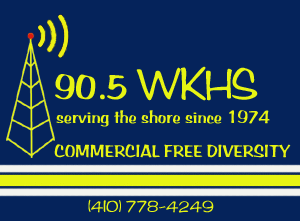A
reader sent me a request for a profile of noncommercial radio in the Baltimore,
Maryland market. I love to compile this
data because it is a great way to learn about an area.
I have done a number of
market profiles for feasibility studies. My
typical fee for this work is $3,000 - $5,000.
Today’s profile is a freebie. Please suggest more markets to profile at
publicradio@hotmail.com.
MARKET
PROFILE: BALTIMORE
METRO POPULATION: 780,000
MEDIAN HOME COST:
$255,000
MEDIAN AGE: 39.0
(US MEDIAN: 36.4)
% ADULTS COLLEGE
GRADUATES: 32.8 (US %: 27.2)
BALTIMORE NONCOMMERCIAL RADIO
DIAL
Nielsen Audio Market Rank: 21
|
FREQ
|
CALLS
|
FORMAT
|
SUMMER
2015 AQH %
|
SUMMER
2015 WEEKLY LISTENERS
|
ESTIMATED
ANNUAL BUDGET
|
|
88.1
|
WYPR
|
NPR News
|
1.6
|
114,700
|
$5,000,000
|
|
88.5
|
WAMU*
|
NPR News
|
1.2
|
79,300
|
$22,000,000
|
|
88.9
|
WEAA
|
Jazz
|
NA
|
NA
|
$1,800,000
|
|
89.7
|
WTMD
|
Triple A
|
0.7
|
68,000
|
$1,900,000
|
|
90.5
|
WKHS
|
Students/WXPN
Simulcast
|
NA
|
NA
|
NA
|
|
91.5
|
WBJC
|
Classical
|
1.2
|
99,400
|
$2,000,000
|
|
91.9
|
WGTS*
|
CCM
|
0.6
|
95,000
|
NA
|
|
93.5
|
WTTZ-LP
|
Traffic
& Road Conditions
|
NA
|
NA
|
NA
|
* Washington DC Metro Station
Data Sources: Nielsen Audio
PPM Summer 2015, CPB, IRS 990 Filings, US Census
NONCOMMERCIAL RADIO MARKET DISCUSSION
Noncommercial
broadcasters in Baltimore face the challenge of competing with stations from nearby Washington, DC. DC is a boom
market that is expanding in both area and population. It is not unusual for a person who lives in
Baltimore to commute daily to DC for work. “Local” means different things to
different people in Baltimore. Many people in the Baltimore area would say WAMU is a local station.
There has been little
change in the Baltimore noncom radio dial in the past few years. WBJC has been
the classical mainstay for three decades.
WEAA has been serving jazz listeners for almost as long.
WTMD is a relative
newcomer. It switched to a professional
Triple A format under the leadership of Steve Yasko about a decade ago.
Also about a decade
ago, WYPR became a 501c3 organization and took over WJHU from Johns Hopkins
University.
WYPR, WBJC, WTMD and
WEAA all appear to be successful financially. No format changes are expected in
the next five years.
OPPORTUNITIES FOR
WKHS
WKHS
is a wild card in the Baltimore noncom market. It has the potential to be a bigger factor.
It puts a decent signal into most of the Baltimore metro:
WKHS
is licensed to the Kent County School Board in Worton, Maryland. The station
operates 24/7 with high school students, a handful of community volunteers and
simulcasts of WXPN, Philadelphia. According to WKHS’ website [link] WXPN is on
WKHS overnight and other times when students or volunteers are not available.
Because
the lack of consistency in programming WKHS likely has very few core listeners.
All five of the major noncom formats (NPR News, Triple A, Classical, Jazz and
Christian Contemporary Music “CCM”) are present in the market.
MY ADVICE
1.
Move the transmitter west, across Chesapeake Bay, to reach the entire metro.
2.
No matter what format is chosen, have it air 24/7.
3.
Establish a physical presence in Baltimore.
4.
Best format option: CCM. There is no CCM
station with a uniquely Baltimore perspective.




I don't have access to signal plotting software, but I highly doubt WKHS could move closer to Baltimore. Besides the generally-packed-solid nature of the FM band throughout the Northeast Corridor, there's WCRH 90.5 in Williamsport MD off to the west. That probably precludes WKHS moving westward without making use of a severely directional antenna and reduced power...to the point where it wouldn't cover Baltimore worth a damn.
ReplyDeleteAlso, you're seriously suggesting a PUBLIC SCHOOL DISTRICT air a CCM format??? There'd be protests galore, if not lawsuits.
Yikes. Things seem awfully squirrely at WTMD, too.
ReplyDeletehttp://current.org/2015/10/most-members-of-wtmd-board-have-resigned-says-former-chair/